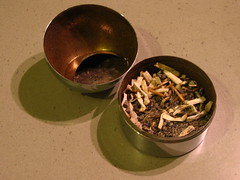Using Can-C Eyedrops to treat your cataracts could not be simpler. Simply apply two drops of Can-C Eyedrops twice a day into your affected eye(s). Although this might not seem like very much, there is no benefit to be gained from increasing this dose. If you are already using other eye medications, seek the advice of your ophthalmic physician before starting to use Can-C Eyedrops.
As with so many conditions, the sooner you start treating your cataracts the more effective your treatment will be. Therefore, it is recommended that you start using Can-C Eyedrops as soon as you have been diagnosed with cataracts.
It is also important to realise that just as senile cataracts do not suddenly appear overnight, Can-C Eyedrops cannot dissolve them that quickly either. Instead Can-C Eyedrops work gently but effectively over a period of time.
However, within one month of use, many people report measurable improvements in their condition. In order to gain maximum benefit, Can-C Eyedrops should be used as directed above for a period of at least 6 months. Even after your cataracts have been successfully treated, it is a good idea to carry on using Can-C Eyedrops in order to try and help prevent any reoccurrence of the problem - especially when you bear in mind senile cataracts are a condition intrinsically linked with aging. As a preventative measure, it is recommended that the dose be lowered to two drops once a day into each eye.
As with so many conditions, the sooner you start treating your cataracts the more effective your treatment will be. Therefore, it is recommended that you start using Can-C Eyedrops as soon as you have been diagnosed with cataracts.
It is also important to realise that just as senile cataracts do not suddenly appear overnight, Can-C Eyedrops cannot dissolve them that quickly either. Instead Can-C Eyedrops work gently but effectively over a period of time.
However, within one month of use, many people report measurable improvements in their condition. In order to gain maximum benefit, Can-C Eyedrops should be used as directed above for a period of at least 6 months. Even after your cataracts have been successfully treated, it is a good idea to carry on using Can-C Eyedrops in order to try and help prevent any reoccurrence of the problem - especially when you bear in mind senile cataracts are a condition intrinsically linked with aging. As a preventative measure, it is recommended that the dose be lowered to two drops once a day into each eye.
Fortunately, Can-C Eyedrops appear to be extremely well tolerated, with no real side effects. For most people, using Carnosine Drops should be an effective, easy to use, side effect free way of treating their cataracts. Rarely, a patient may experience some stinging. If this does happen, the situation should rectify itself with continued use. If not, then Can-C Eyedrops should no longer be used.
Another benefit of Cataract Drops that they can also be used by contact lens wearers. In fact, some people find that it makes wearing their contact lens more comfortable - particularly if they suffer from dryness and irritation that is sometimes associated with contact lens use. The active ingredient in Can-C Eyedrops, N-acetylcarnosine, may also reduce the build up of lactic acid in the eyes which means that contact lenses can safely be worn for longer.
Jacob - About the Author:
Jacob has the vast knowledge in health and doing research on eye drops from past 6 year. He is working with can c eye drops and write the articles on cataract eye drops, carnosine eye drops and senile cataract.
Article Taken From - How to use Can-C Eyedrops
Article Taken From - How to use Can-C Eyedrops




